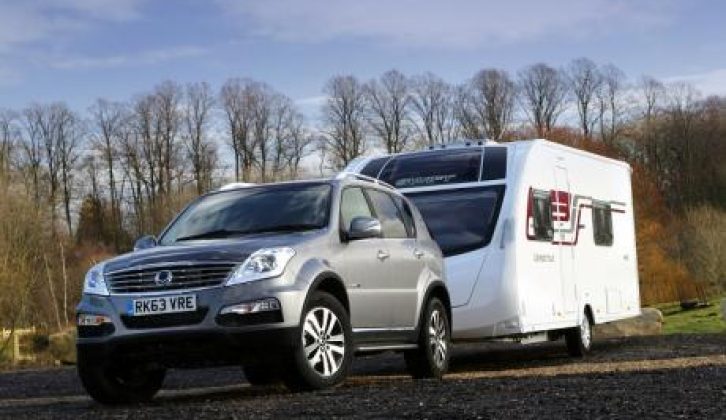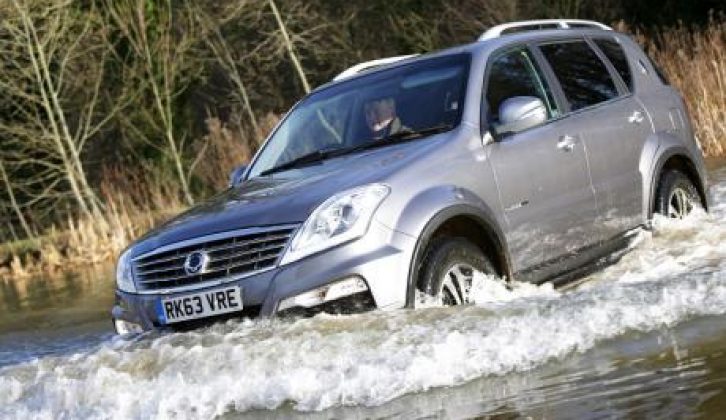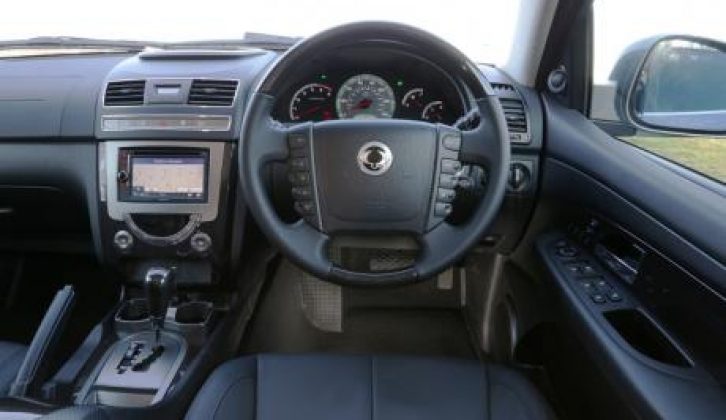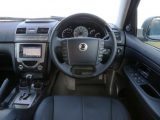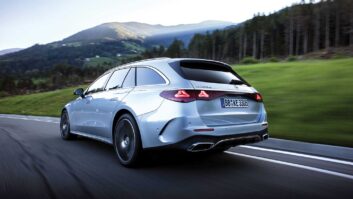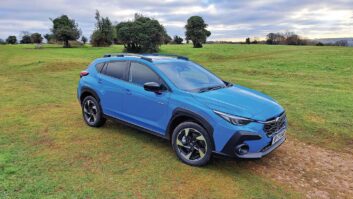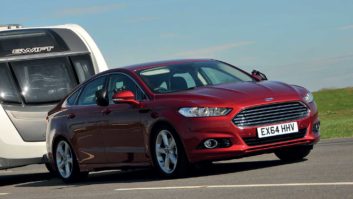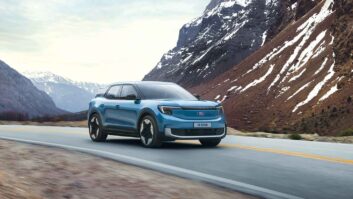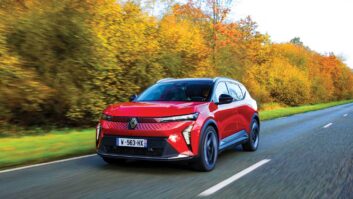[tl:gallery size=460×307]
A look at the spec sheet of the Rexton W shows it has plenty in common with the hefty, no-frills 4x4s of a decade ago (which is no surprise considering this is an update of a design which was first sold in the UK in 2003). The kerbweight of 2095kg for the six-speed manual (2128kg for the auto) gives an 85% match figure of 1781kg. For experienced caravanners happy to tow between 85% and 100% of the kerbweight, it makes a reasonable match for just about any tourer, with the legal maximum set at 3000kg.
Driving the Rexton W
From the outside, the most obvious difference between the Rexton W and older versions of the Rexton is the new-look front end. Squint a bit, and there are hints of the Mercedes-Benz ML to the front of the car, with its new grille and headlights.
Once driving, it’s the engine which makes the biggest impression. The 2.0-litre diesel is the same as that found in the Korando Sports pick-up. Maybe you’re thinking it’s not big enough to pull such a heavy car. Well, with 155PS (153bhp) and 266lb.ft of torque, the Ssangyong engine is a lot brawnier than most diesels with a similar capacity.
It’s also much more refined than the engines fitted to older Rextons, staying in the background at steady speeds and intruding little even under hard acceleration. With a driver and one passenger on board the Rexton W gathers speed at a respectable pace, but it’s certainly not quick. Don’t expect punchy overtaking with a caravan in tow, but there should be enough muscle to pull big tourers so long as you’re not in a hurry.
Buyers have the choice of a six-speed manual or a five-speed Mercedes-Benz automatic gearbox. I drove the automatic, which Ssangyong Motor UK expects eight or nine out of ten buyers to choose over the manual. It’s a smooth-shifting box, although it can be slow to change down when accelerating. Drivers can change gear for themselves using a switch on the side of the gearlever of buttons on the front of the steering wheel. It’s an unusual arrangement – paddles behind the steering wheel are more commonplace – but the buttons work well enough once the driver is used to their position.
In terms of ride and handling, SUVs (including the smaller Ssangyong Korando) have come a long way in the last decade. The Rexton W still feels distinctly old school. There’s a relaxed but slightly loose ride at high speed, and big bumps are felt with a thump from the rigid axle at the back of the car.
[tl:gallery size=460×307]
Off-road in the Rexton W
In normal driving the Rexton W can be left in two-wheel drive mode. Four-wheel drive can be selected on the move at the twist of a switch (Ssangyong recommends a maximum speed of 25mph for making the change to four-wheel drive mode). For heavy duty off-roading, there’s a low-ratio four-wheel-drive mode, which can be selected with the gearbox in neutral (or with the clutch depressed in the manual).
The Rexton W is really impressive in the mud, finding plenty of grip and easing down steep slopes using engine braking. There’s a simple 50/50 split between the axles and none of the clever hill-descent systems you find on many modern off-roaders. But in all honesty, the Rexton doesn’t miss them. It may take a no-frills approach to going off-road, but it’s very effective.
Certainly, pulling a tourer away from a muddy pitch should pose no problems.
[tl:gallery size=460×307]
Inside the Rexton W
Anyone familiar with the old car will find the interior finish of the new model has improved, with some soft-touch plastics on top of the dash. It still looks and feels like a budget car, though.
There’s space for seven, with enough legroom in the second row for adults to be reasonably comfortable. The middle row moves well out of the way to give easy access to the third row, which offers plenty of headroom although legroom is rather tight and there’s not much room for passengers’ feet underneath the seats in front.
With all the seats upright luggage space is very limited – if you need to use all seven seats often Ssangyong’s Turismo MPV is a better bet. However, with the third row folded there’s plenty of room for bags. The car is also available as a five-seater which frees up some more space.
The Rexton’s running costs
Along with its high kerbweight, the Rexton W’s value for money is what’s really going to appeal to caravanners. Prices start from £21,995. That buys the SX manual, which comes with cruise control, air conditioning, electrically operated and heated door mirrors and a CD player with iPod and Bluetooth connectivity.
Step up to EX (priced from £24,495) for an electrically adjustable driver’s seat, leather upholstery, privacy glass and rear parking sensors. Choose the automatic gearbox and you’ll pay another £1500.To put that in context, at these prices the top of the range Rexton W is cheaper than the entry-level version of the Kia Sorento.
Just about every rival is more fuel efficient than the Rexton W, but with official combined economy of 38.2mpg for the manual and 36.2mpg for the auto it’s no gas-guzzler.
The warranty package is a definite selling point. Like other Ssangyongs, the Rexton W comes with five years of cover with no mileage limit.
So, is the Rexton w the true successor to the original Kia Sorento? It’s not the most polished car to drive, but it’s capable off road, practical, well equipped and should prove painless to own.
As for its towing ability, we’ll soon find out as Practical Caravan is about to take delivery of the Rexton W on long-term test.
Practical Caravan Facebook page
